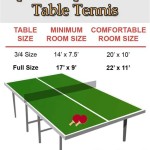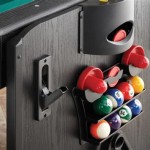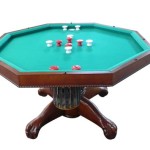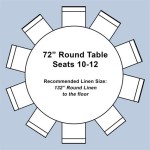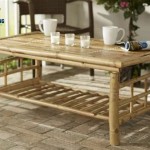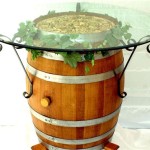The Enduring Appeal of the Distressed White Side Table
Distressed white furniture, particularly the side table, has carved a significant niche in the interior design world. Its popularity stems from its versatility, ability to complement various aesthetics, and its embodiment of both vintage charm and contemporary sophistication. The "distressed" element, achieved through techniques that mimic wear and tear, adds character and depth, preventing the white finish from appearing stark or sterile. This deliberate imperfection is what makes it a sought-after piece, suitable for diverse living spaces ranging from rustic farmhouses to modern minimalist apartments.
The term "distressed" refers to a finish that has been artificially aged to appear antique or well-used. This generally involves techniques like sanding edges, applying layers of paint and glaze, and sometimes even creating dents or scratches. The goal is to achieve a finish that tells a story, hinting at a history even in a newly manufactured piece. The white color, juxtaposed with the distressed texture, creates a visually interesting contrast. The bright white provides a clean, fresh base, while the distressing adds warmth and visual texture, ensuring the table doesn't feel impersonal or mass-produced.
Side tables, by their very nature, are utilitarian pieces of furniture. They serve as convenient surfaces for lamps, books, beverages, or decorative items. Their relatively small size makes them easy to incorporate into various rooms without overwhelming the space. A distressed white side table enhances this functionality with its aesthetic appeal, becoming more than just a surface; it becomes a focal point that contributes to the overall ambiance of the room.
Versatility in Design Styles
One of the primary reasons for the enduring popularity of the distressed white side table is its remarkable versatility. It seamlessly integrates into a wide array of design styles, acting as a unifying element or a contrasting piece depending on the existing decor. For instance, in a farmhouse or cottage-core setting, a distressed white side table with turned legs and subtle distressing complements the rustic aesthetic, enhancing the warm and inviting atmosphere. Its presence strengthens the theme of natural materials and lived-in comfort.
In a coastal-themed room, the distressed white finish evokes the feeling of sun-bleached wood and salty air. Paired with natural textures like jute rugs and linen fabrics, the side table contributes to the relaxed and breezy atmosphere characteristic of coastal design. The white provides a clean backdrop that allows other coastal elements, such as seashells and nautical decor, to stand out.
Even in more modern and minimalist spaces, a distressed white side table can find its place. While it may seem counterintuitive to incorporate a deliberately aged piece into a contemporary setting, the contrast can be surprisingly effective. The distressed finish adds a touch of warmth and character to an otherwise clean and streamlined room, preventing it from feeling too sterile or impersonal. To achieve this effect, it is often best to select a side table with a simple, modern silhouette, focusing the visual interest on the distressed finish itself.
Furthermore, the distressed white side table works well with transitional design, which blends traditional and modern elements. It can bridge the gap between classic furniture pieces and contemporary accents, creating a cohesive and balanced look. Its neutral color allows it to blend in with various color palettes, making it a versatile choice for evolving design preferences.
The Distressing Process: A Blend of Art and Technique
The process of creating a distressed finish on a white side table involves several techniques, each contributing to the final aesthetic. The goal is to simulate the effects of age and use, creating a piece that looks like it has been cherished for years. This process typically begins with the selection of the wood, which is then prepared for painting. Often, multiple layers of paint are applied, with each layer potentially being a slightly different shade of white or off-white.
Once the paint is dry, the distressing process begins. This can involve several methods, including sanding, chipping, and the application of glazes or stains. Sanding is a common technique used to remove paint from edges and corners, revealing the underlying wood and creating a worn appearance. The amount of sanding can vary depending on the desired level of distress, ranging from subtle wear to a more pronounced, weathered look.
Chipping and scratching techniques can be used to simulate the effects of impact and wear. This can be achieved using various tools, such as knives or scrapers, to create small imperfections on the surface of the table. The placement of these imperfections is crucial, as they should appear natural and random, mimicking the way wear occurs over time.
Glazes and stains are often used to add depth and dimension to the distressed finish. These are typically applied after the sanding and chipping processes, and they help to highlight the imperfections and create a more aged appearance. Darker glazes can settle into the grooves and crevices, accentuating the texture and adding visual interest. A final protective coat, often a matte or satin finish, is applied to seal the distressed finish and protect it from further damage.
The level of distressing is a key consideration when selecting a distressed white side table. Some tables feature subtle distressing, with only minor wear and tear, while others have a more heavily distressed appearance, with significant paint chipping and exposed wood. The choice depends on the overall aesthetic of the room and the desired level of character. A heavily distressed table can be a statement piece, while a subtly distressed table can blend in more seamlessly with existing decor.
Practical Considerations: Durability and Maintenance
While the aesthetic appeal of a distressed white side table is undeniable, practical considerations such as durability and maintenance are equally important. The distressing process, while designed to mimic wear, should not compromise the structural integrity of the table. A well-made distressed white side table is crafted from solid wood or high-quality engineered wood, ensuring its longevity and stability.
The finish itself should be durable and resistant to scratches and stains. A protective topcoat is essential to prevent damage from spills and everyday use. When selecting a distressed white side table, it is important to inquire about the type of finish used and its resistance to wear and tear.
Maintenance of a distressed white side table is generally straightforward. Regular dusting with a soft cloth is sufficient to keep the surface clean. For spills, it is important to wipe them up immediately to prevent staining. Avoid using harsh chemicals or abrasive cleaners, as these can damage the distressed finish. A mild soap and water solution can be used for more stubborn stains, but it is important to test it on an inconspicuous area first.
Over time, the distressed finish may develop additional wear and tear, which can actually enhance its character. However, if desired, minor touch-ups can be performed to repair scratches or chips. Matching paint and glazes can be purchased at most hardware stores, and with a little patience and skill, it is possible to restore the distressed finish to its original condition.
When placing a distressed white side table in a high-traffic area, it is advisable to use coasters and placemats to protect the surface from spills and scratches. Felt pads can also be attached to the bottom of the legs to prevent scratching of the floor. With proper care and maintenance, a distressed white side table can provide years of enjoyment and add a touch of character to any room.
In conclusion, the distressed white side table's enduring popularity is a testament to its versatility, aesthetic appeal, and practical functionality. Its ability to seamlessly integrate into diverse design styles, the artistry involved in the distressing process, and the ease of maintenance contribute to its continued success as a sought-after piece of furniture. Its charm lies in its imperfection, adding character and warmth to any space.

1 Drawer Side Table Distressed White Stylecraft Target

Rustic Handmade End Tables Set With Shelve Distressed White Base Provincial Brown Top Of Farmhouse Side X Criss Cross Style

Christina Distressed White Side Table Kirklands Home

Distressed White Wooden Side Table Rustic End Lamp Hallway Coastal Decor Beach House

Distressed Cream Side Table 85 Liked On Polyvore Featuring Home Furniture Tables A Painting White

Willow End Table Distressed White Furniture Modern Coastal Decor Living Rooms

Shabby Little Coffee Table Chic Distressed

Distressed White End Table Bedside Small Nights 12w X 15l 24t Finish

Safavieh Mary Rustic White Cream Side Table Amh5711c The Home Depot

Luxen Home 18 8 In W X 26 25 H Distressed White Wood Round Farmhouse End Table Assembly Required The Tables Department At Com

